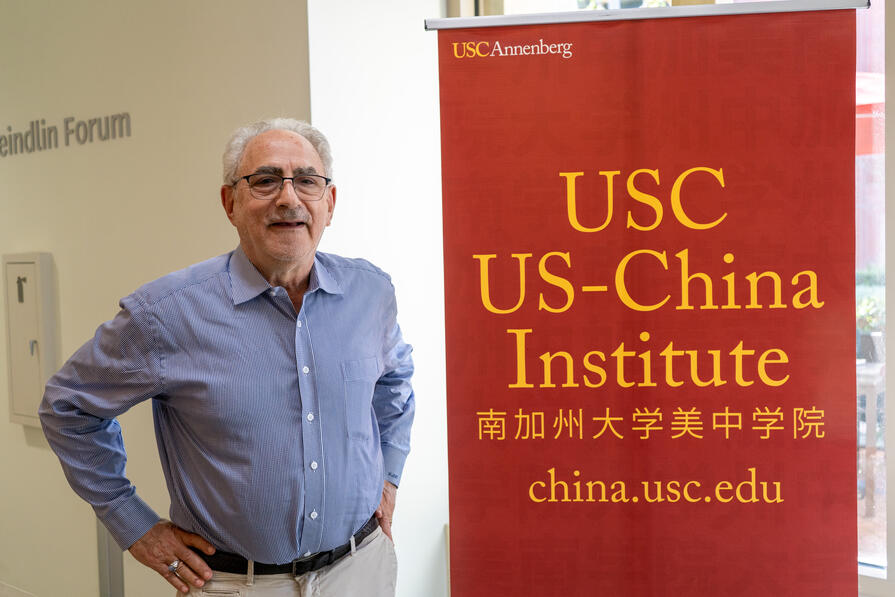Phenomenal growth expected to continue
By Robert Dekle (USC) and Huayu Sun (China Daily)
Originally published by China Daily on May 31, 2007.
How long can China's rapid economic growth continue? This is a central - if not the most central - question in China, Asia, and in the world economy. China's GDP has been growing consistently at 8 to 10 percent per year over the last decades.
Straight extrapolation and journalistic accounts suggest that at current growth rates, China will surpass Japan to become the world's second largest economy by 2020; and will surpass the US to become the world's largest economy by 2050.
The business and popular press is especially optimistic about future Chinese growth rates. One academic pointed out that since at least 300 million more farmers will join the manufacturing labor force in the next decade or so, the growing number of workers in the manufacturing sector can continue for at least a few more decades.
The academic also suggests that since current household saving accounts for more than 30 percent of China's GDP, when combined with the inflow of foreign capital the current level of physical investment can also be sustained.
Moreover, foreign direct investment into China remains insatiable, and the $100 billion or so of foreign capital pouring into China every year is expected to continue. Education levels and research and development capacity in China are also increasing at a brisk rate.
Thus, China's current high growth rate can be sustained for at least several more decades.
Since productivity differs in different sectors, the reallocation of labor from a low productivity sector to a higher productivity sector will result in an increase in overall labor productivity. For example, output per worker in agriculture is much lower than that in non-agricultural work. The reallocation of labor from agriculture to other sectors should result in an increase in overall labor productivity.
The greatest contributor to overall labor productivity growth is the growth in Total Factor Productivity (TFP) - output growth not accounted for by the growth in inputs - particularly in the private sector. The next greatest contributor is the reallocation of labor from the low labor productivity in the agricultural sector to the higher labor productivity in other sectors.
Chinese TFP growth rates for the agricultural sector are projected to decline to 2 percent in 2020 and 1.2 percent in 2040. Chinese TFP growth rates for the private sector are projected to decline to 3.8 percent and 2.5 percent in 2020 and 2040, respectively.
In 2003, employment in agriculture, the public and private sectors was 49 percent, 29 percent and 22 percent, respectively. We assume that the share of agricultural employment will continue to shrink, to 36 percent in 2020 and 20 percent in 2040.
We assume that the share of private sector employment will continue to expand, to 43 percent in 2020 and 70 percent in 2040. Consistent with the Chinese government's privatization plans, we assume that the share of public sector employment will decline to 21 percent in 2020 and 10 percent in 2040.
Given these assumptions, we project that the average growth rate of Chinese output per worker from now until 2020 is 5.5 percent; and from 2020 to 2040 is again 5.5 percent. This 5.5 percent growth in overall labor productivity is only slightly lower than the 5.7 percent growth in labor productivity achieved between 1978 and 2003.
Adding the 0.3 percent average growth in aggregate labor supply between now and 2040, the growth in annual Chinese aggregate GDP from now until 2040 is projected to average 5.8 percent.
The largest contributors to this growth are the increases in labor productivity in the private sector and the transfer of labor from agriculture to other sectors.
The increase in private sector labor productivity is driven mainly by Total Factor Productivity growth in the private sector.
Assuming that Japan continues to grow at its potential of 2 percent and China grows at 5.8 percent, Chinese aggregate GDP should surpass Japan's aggregate GDP sometime between 2020 and 2025.
The article was presented at the Shanghai Forum on May 25-27 at Fudan University



